PNY RTX 2080 Ti Blower Rendering Related Benchmarks
Next, we wanted to get a sense of the rendering performance of the PNY GeForce RTX 2080 Ti Blower.
Arion v2.5
Arion Benchmark is a standalone render benchmark based on the commercially available Arion render software from RandomControl. The benchmark is GPU-accelerated using NVIDIA CUDA. However, it is unique in that it can run on both NVIDIA GPUs and CPUs.
Download the Arion Benchmark from here. First-time users will have to register to download the benchmark.
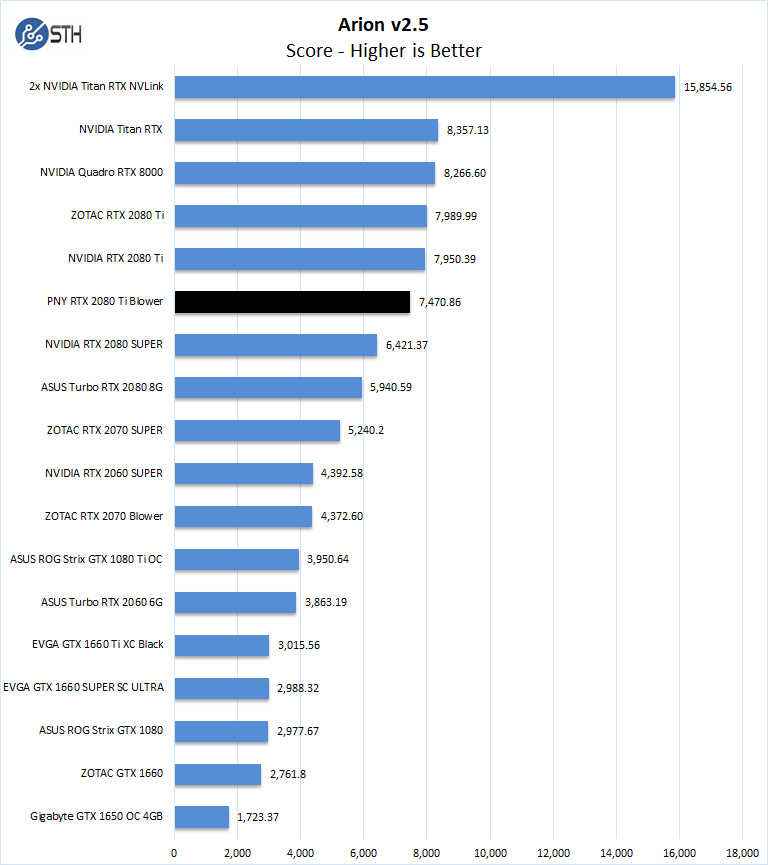
Under heavier loads, the PNY GeForce RTX 2080 Ti Blower performance takes a hit, in this case, just over 500 points vs. ZOTAC GeForce RTX 2080 Ti, which uses dual-fans for cooling. There is still a gap between this and the 2080 SUPER, but it is smaller than on some other tests.
MAXON Cinema4D 3D
ProRender is an OpenCL based GPU renderer which is available in MAXON’s Cinema4D 3D animation software. A fully functional 42-day trial version is available for downloaded from the MAXON website here. Note: Even after expiration, the trial can still be used to measure render times.
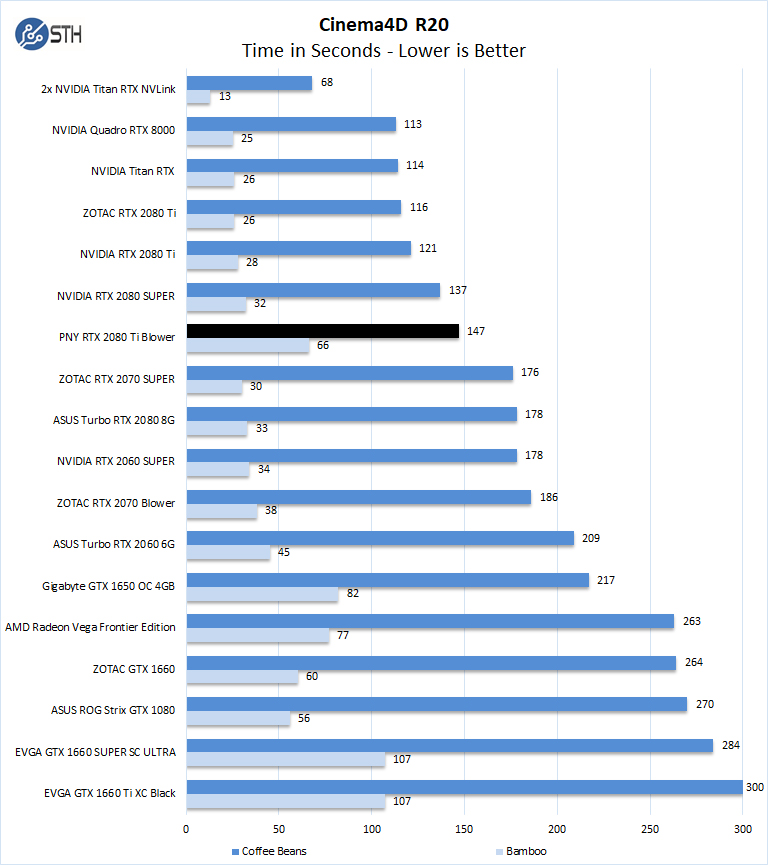
With a 31 second difference, the PNY RTX 2080 Ti Blower ranks quickly falls to the bottom of the RTX 2080 Ti series.
OctaneRender 4
OctaneRender from Otoy is an unbiased GPU renderer using the CUDA API. The latest release, OctaneRender 4, introduces support for out of core geometry. Octane is available as a standalone rendering application, and a demo version is available for downloaded from the OTOY website here.
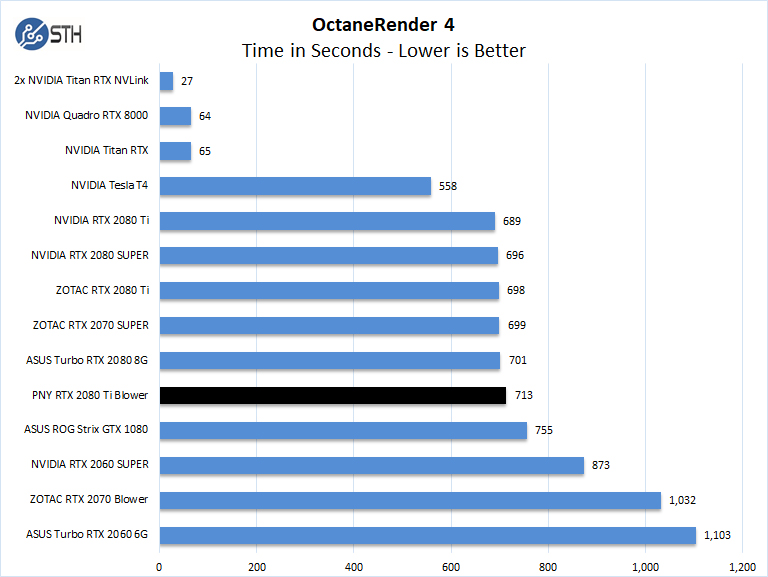
Again, we see a 23-second difference, and the PNY RTX 2080 Ti Blower again falls to the bottom of the RTX 2080 Ti series.
Redshift v2.6.32
Redshift is a GPU-accelerated renderer with production-quality. A Demo version of this benchmark can be found here.
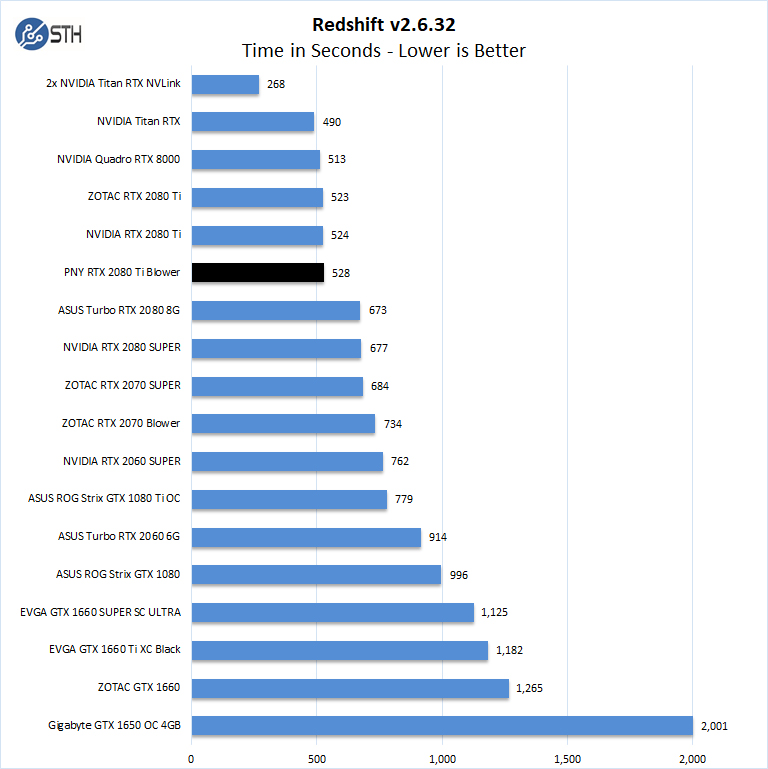
PNY GeForce RTX 2080 Ti Blower finishes only 5 seconds behind the Founders Edition card. That is a sub-1% delta which is a test variation.
Next, we will have 3DMark results before moving onto power consumption, thermals, and our final thoughts.


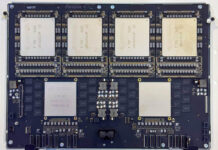
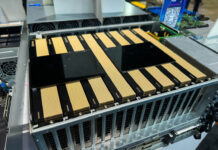
I wouldn’t touch anything from PNY with a 10 foot pole. Everything I’ve bought from them has died prematurely.
We rack 8 of the Supermicro 10 GPU servers adding about 3 racks a quarter. That isn’t much, but it’s 240 + 4 spare GPUs per quarter. We’ve been doing them since the 1080 Ti days. Our server reseller gets us good deals on other brands but says PNY doesn’t want the business as much so we get other brands.
I’m gonna be honest here. That cooler looks like they’re just using something cheap. I’d like to see PNY actually design a nice cooler like the old NVIDIA FE cards had with vapor chamber and a metal housing. Maybe if they’d do that they could keep clock speeds higher or even push them and have a better solution for dense compute like you’re saying.
If they’re not doing that, then its too easy to buy Zotac for GPU server and workstation
The octane benchmark is probably using a scene that doesn’t fit in 11GB of VRAM, hence the large difference between high VRAM cards. It doesn’t say much about the card’s actual performance since it is heavily bottlenecked by out-of-core memory accessing.
@IndustrialAIAdmin What brands and models do you run in such environment?